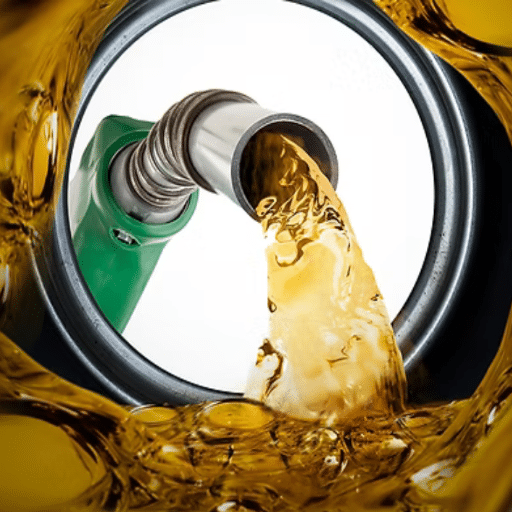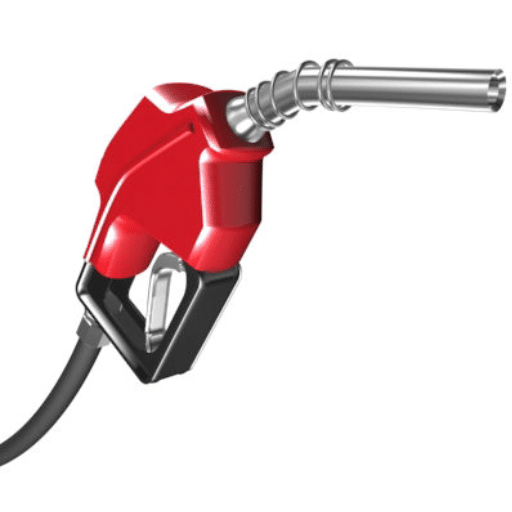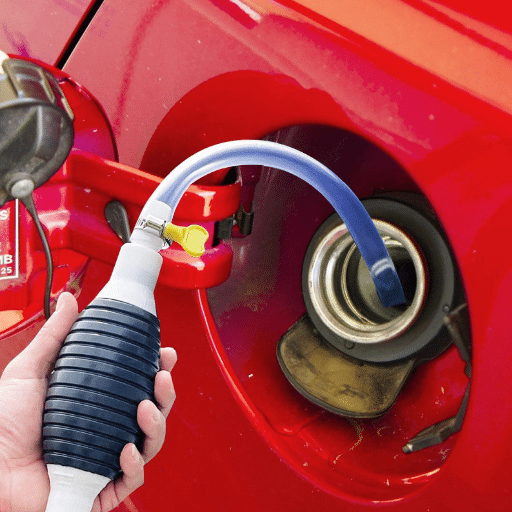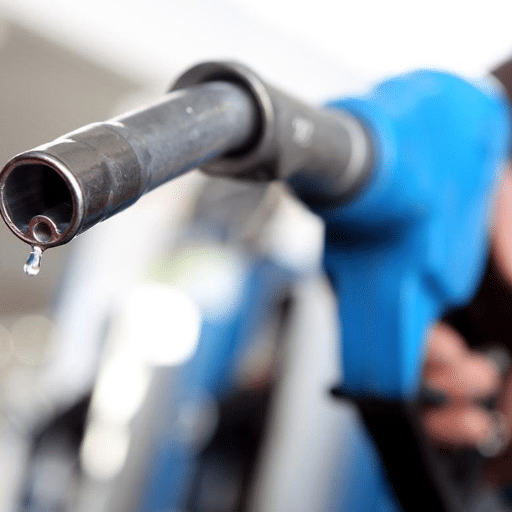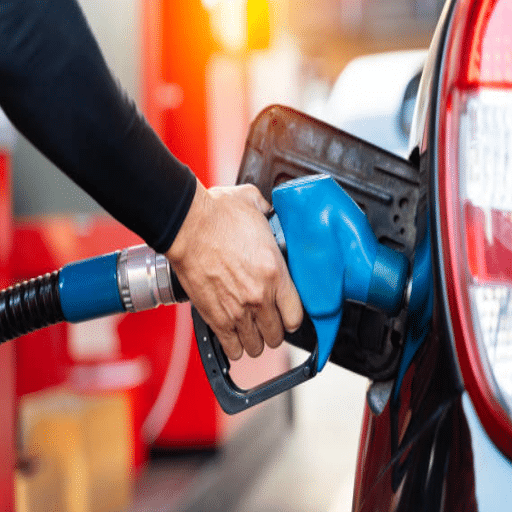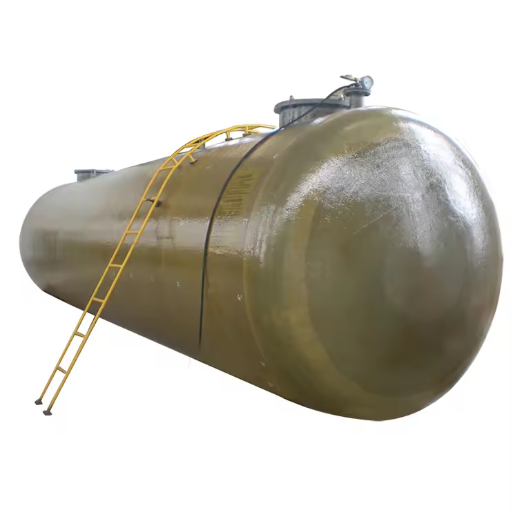In the dynamic fuel chain industry, the landscape of gas stations is evolving. From big, full-service stations on the highway to tiny, mini gas stations in urban areas, they all cater to the specific needs of a community. Whether you are a traveler in need of a quick pit stop or a business owner considering an investment, understanding the differences and advantages of small gas stations can be extremely helpful. This guide shines a spotlight on gas stations, particularly mini gas stations, explaining their growing popularity, key features, and modern road transport needs. So sit back and dive into these essential service hubs and discover why they are of growing importance in today’s fast-paced world.
Understanding Small Gas Stations
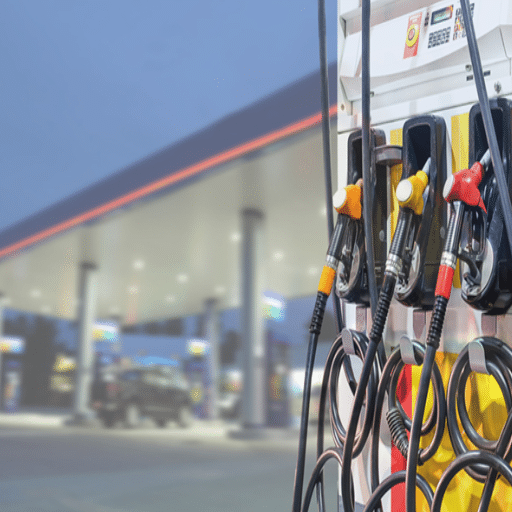
Compact gas stations serve as quick-service outlets for motorists; hence the name. With fewer fueling pumps than large stations, they are typically situated to cater to areas with restricted access or heavy traffic. The smaller footprint serves smaller urban spaces or rural locales where a large gas station would struggle to find a foothold. Many small gas stations offer convenience stores, providing them with the versatility to offer quick refueling and essential goods. These stations emphasize ease of access, timely service, and reasonable pricing for all needs: from travelers to local folks.
What is a Small Gas Station?
Small-scale gas stations are crucial to the global fuel distribution network, particularly in areas where establishing larger service stations may not be feasible. These stations are typically equipped with fewer fuel pumps, ranging from 2 to 6, and occupy smaller physical footprints compared to their large-scale counterparts. Standing on their own feet, these stations have performed considerably in the fuel-selling process. Some are of the view that up to 35-40% of the fuel market in the United States is closely held by independent and small-sized companies.
Apart from just fueling cars, many small gas stations have diversified their services to remain competitive. These typically include mini convenience stores selling snacks, beverages, home care items, and even auto supplies. Additionally, small gas stations are increasingly integrating green solutions, such as alternative fuel options, EV charging points, and biofuel pumps, to maintain up-to-date sustainability trends.
Their presence is, however, more felt in rural and suburban areas, where they serve communities with very limited access to larger service hubs. Apart from that, these stations are known for keeping the local economies afloat; most of them are independent or family-owned businesses that create employment and promote community involvement. This adaptability and affordability make small gasoline stations a vital part of everyday life for millions of motorists.
Benefits of Operating a Mini Gas Station
Running a mini gas station presents numerous considerations for both finances and logistics. One of the perks is that fuel has always been in demand. Recent data indicate that the worldwide demand for gasoline is expected to remain robust, with millions of vehicles running on fuel as a significant source of energy. This consistent demand results in dependable customers and thus predictable revenue for gas station operators.
Key Financial Benefits
- Consistent Demand: Fuel remains a necessity with a predictable customer flow
- Revenue Diversification: Multiple income streams beyond fuel sales
- Lower Capital Investment: More affordable than large-scale stations
- High-Margin Products: Convenience items offer significant profit potential
Another big plus is income diversification. The typical modern mini gas station offers a range of services, including convenience stores, car washes, and quick-service food outlets. Studies show that for more than half of mini gas station operators, the majority of profits typically come from non-fuel sales, especially from high-margin products such as snacks, beverages, and essential groceries.
Mini gas stations are very convenient to scale, being a significant advantage. This type of gas station typically requires less capital investment than a larger one, making it ideal for a start-up or entry into the fuel service industry. Considering their smaller footprint, mini gas stations can conveniently locate themselves in high-traffic areas, whether in rural or urban neighborhoods, where space may be scarce but consumer needs prevail.
Technological advancements have contributed to lower operating costs, following the implementation of automated systems for payment and fuel monitoring, as well as further discoveries made possible by efficient inventory handling systems.—have enabled mini gas station proprietors to utilize resources and return better earnings, in effect making the business model attractive and a guarantee for willing entrepreneurs.
Differentiating Between Gas Stations and Fuel Stations
While the two terms are often used interchangeably, there are subtle differences based on services, fuel types, and regional usage patterns. Gas stations primarily refer to places where fuels are sold, such as gasoline and diesel, for vehicles that generally use traditional internal combustion engines. These service centers may also feature convenience stores, car washes, or air-pressure stations, which basically act to meet various intermediate needs of drivers.
| Aspect | Gas Stations | Fuel Stations |
|---|---|---|
| Primary Fuel Types | Gasoline, Diesel | Multiple fuel types, including alternatives |
| Vehicle Focus | Traditional ICE vehicles | All vehicle types, including EVs |
| Regional Usage | Primarily US terminology | Europe, Asia, and global usage |
| Energy Infrastructure | Basic fuel dispensing | Comprehensive energy solutions |
| Future Orientation | Traditional approach | Forward-looking energy hubs |
Fuel stations, therefore, form a more generic term that embraces the infrastructure for various fuel types. Apart from gasoline and diesel fuel, an updated fuel station caters to newer alternative fuel sources such as compressed natural gas (CNG), liquefied petroleum gas (LPG), hydrogen fuel, and electric vehicle charging infrastructure. With the spotlight on sustainable energy globally, the increasingly important role of EV charging stations cannot be stressed enough; there were over 29 million public and private chargers worldwide as of 2023, revealing the accelerated transition to EVs.
Regional trends and developments also inform the terminology adopted. In the US, the term “gas station” is widely used. In contrast, countries in Europe and parts of Asia tend to use “fuel station,” thereby including a diverse range of energy offerings. Another emerging trend is the interpenetration of renewable energy technologies, such as solar power and wind energy, with fueling infrastructure —a new concept being increasingly adopted at fuel stations rather than traditional gas stations.
Hence, the evolution in types of stations not only addresses the growing demand for diversity in energy but also sets the stage for addressing environmental concerns and embracing technological trends. Fuel stations are evolving into energy hubs that will cater to the new era of mobility, while mainstream gas stations continue to dominate the majority of today’s vehicle market.
Key Components of a Mini Gas Station
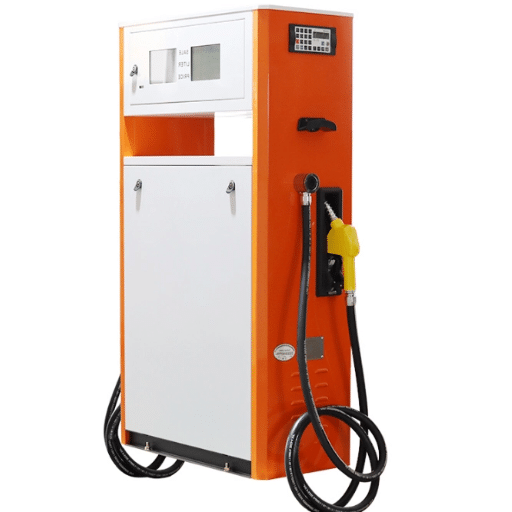
Understanding the essential components that make up a mini gas station is crucial for both operators and customers. These elements work together to create an efficient and safe fueling environment.
- Fuel Dispensers: The fuel dispensers are what fuel up the fuel-draining vehicle with one or more fuel options such as gasoline, diesel, or alternative fuel.
- Storage Tanks: These tanks are used to store fuel, either underground or above ground, depending on availability and need.
- Payment Kiosk: A payment system that allows you to pay through either a cashier or a self-service terminal.
- Canopy: A structure that shelters customers and equipment from weather conditions.
- Safety Arrangements: Fire extinguishers, spill control measures, and emergency shut-off systems.
- Signage: Clear signboards displaying prices, service listings, and safety instructions.
These components make the mini gas stations small yet well-structured, enabling them to efficiently meet the needs of a diversified customer base.
Essential Equipment for a Small Gas Station
To ensure a smoothly run small gas station and keep customers satisfied, all necessary equipment should be readily available. Below are some elements that assure professionalism in operation and uphold the industry standards:
Fuel Dispensers
Being one of the highly modernized pieces of fuel dispensing technology, they are equipped with advanced features such as digital screens, card readers, and leak detection technology, among others. It is aimed at ensuring the delivery process has been conducted correctly and that the flow measurement is very accurate. For example, good dispensers measure fuel flow rates with an average of 40-50 liters per minute for regular vehicles and up to 120 liters per minute for heavy-duty machinery.
Storage Tanks
Storage tanks ensure the safe storage of fuel, being placed underground and above ground. They must be environmentally compliant and most often include double-wall features that prevent leaks. Capacities vary depending on the size of the station and generally range from 5,000 to 50,000 gallons for small gas stations.
Equipment Performance Specifications
| Equipment | Specification | Performance Metric |
|---|---|---|
| Fuel Dispensers | Regular Vehicles | 40-50 liters/minute |
| Fuel Dispensers | Heavy-duty Machinery | Up to 120 liters/minute |
| Storage Tanks | Small Gas Stations | 5,000-50,000 gallons |
| LED Canopy Lighting | Evening Traffic Increase | Nearly 20% more customers |
An Integrated Point of Sale System
With the integration of POS systems, transactions are streamlined and inventory is kept. Many modern POS systems now also offer contactless payment options, mobile app integrations, and features for customer loyalty. Statistics show stations with updated systems benefit from quicker transaction times and higher customer satisfaction rates.
Automatic Tank Gauge (ATG) Systems
ATG Systems are designed to provide fuel levels and warnings of leaks based on real-time data from the storage tank conditions, serving as the core for environmental standard compliance and risk reduction.
Canopy Lighting
LED canopy lighting saves energy while providing visibility, thereby attracting customers at night or in other low-light conditions. According to a study, well-lit stations attract nearly 20% more customers during evening hours.
Air Compressors
Adding air for tire inflation is one more service that enhances the customer experience. Compact, durable air compressors equipped with digital gauges are preferred, as they provide for more accurate pressure readings.
Security Systems
These systems consist of high-definition cameras, motion sensors, and alarms that monitor activities within and around the station. According to studies, the presence of obvious security systems could significantly deter cases of theft and vandalism in gas stations.
Spill and Fire Response Equipment
Spill kits, absorbent mats, and fire extinguishers go into this category of equipment designed to respond to emergencies. Following safety procedures will ensure that customers, employees, and the environment are protected.
When these facilities are paired with strong safety and technical elements, they help small gas stations operate smoothly and serve their respective communities. Complementing their safety commitment with modern and compliant equipment would ensure operational efficiency and also gain customer confidence.
Choosing the Right Fuel Pumps
Choosing the right fuel pumps for a gas station is a crucial decision that impacts the station’s performance, customer service, and operational costs. Advanced technology is embedded in modern fuel pumps to ensure maximum efficiency, accuracy, and safety. High-speed pumps should be used at sites with high traffic volume so cars can fuel up quickly and reduce waiting time. Standard pumps are suitable for stations with a low customer base, as they are inexpensive to procure and maintain.
Fuel Pump Selection Criteria
- Traffic Volume: High-speed pumps for busy locations, standard pumps for low-traffic areas
- Payment Integration: Built-in card readers and contactless payment systems
- Accuracy: Electronic meters for precise measurement and compliance
- Durability: Stainless steel construction for longevity
- Energy Efficiency: Modern systems with optimized power consumption
Other essential features to consider include integrated payment systems that enable customers to conduct cashless transactions, offering great convenience. Industry figures indicate that the number of consumers willing to use contactless payment systems to pay, wherever such options are available, jumped above 55 percent.
Valuing metering accuracy, the electronic meter pumps with measurement-wise efficiency contribute the least to revenue loss and ensure compliance with legal requirements. On the other hand, durability should also be considered: stainless steel pumps with corrosion-resistant components would be ideal for prolonged use, especially in areas where extreme weather conditions prevail.
By considering the station’s needs, customer flow, and budget, while paying particular attention to features such as ease of operation, energy efficiency, and durability, gas-station owners can choose from the best pumps that increase operational efficiency and enhance the client experience.
Understanding Storage Tanks and Portable Solutions
Storage tanks and portable solutions are essential in various industries, including gas stations, agriculture, and construction, for managing fuel, chemicals, and other liquids. Commonly used storage tanks are generally of two types: above-ground storage tanks (ASTs) and underground storage tanks (USTs). Although maintenance and inspection are easier in ASTs, considering they can be accessed, these tanks are also less likely to leak in an unnoticed manner. However, USTs are space-efficient and hence suitable where surface area is limited, but they must comply with stringent leak prevention measures.
| Tank Type | Advantages | Considerations | Best Use Cases |
|---|---|---|---|
| Above-Ground Storage (AST) | Easy maintenance, visible leak detection | Requires more surface space | Industrial facilities, rural locations |
| Underground Storage (UST) | Space-efficient, aesthetic appeal | Strict leak prevention requirements | Urban gas stations, limited space areas |
| Portable Solutions | Flexibility, mobility | Limited capacity, transport regulations | Construction sites, emergency supply |
Modern tanks are made from carbon steel, fiberglass-reinforced plastic, and stainless steel as primary tank materials. Whereas fiberglass tanks offer excellent corrosion resistance and long life, steel tanks are very strong and can also handle elevated-pressure conditions very well. Industry practice leans towards double-walled tanks or secondary containment systems to ensure environmental safety and regulatory compliance.
Portable solutions such as mobile fuel tanks or trailer units are a good choice due to their versatility. These solutions are often engineered with spill prevention systems, quick-connect fittings, and built-in filtration features. Portable tanks are best suited for remote sites, temporary projects, or emergency fuel supply. For instance, mobile diesel tanks with capacities ranging from 100 to 1,000 gallons are widely used in construction and farming for on-site refueling purposes.
Additionally, advancements in intelligent monitoring technology have significantly improved the management of both storage and portable solutions. Sensors and IoT-based systems enable real-time fuel-level tracking, temperature monitoring, and leak detection, promoting efficient resource management and ensuring safety compliance. By applying technological advancements in conjunction with operational requirements, businesses can ensure that liquid storage and transportation are carried out in an efficient, reliable, and environmentally friendly manner.
Best Practices for Running a Small Gas Station
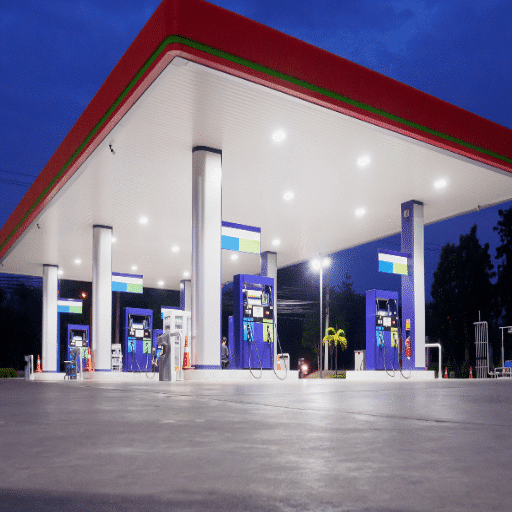
Successfully operating a small gas station requires attention to multiple operational aspects. Here are the essential best practices that can ensure smooth operations and customer satisfaction:
Operational Excellence Guidelines
- Keep Equipment in Good Order: Arrange for routine maintenance of pumps, storage tanks, and other equipment to ensure hassle-free operation and avoid costly repairs.
- Ensure Proper Inventory Management: Utilize tools or software to monitor fuel levels, sales, and stock levels for timely reordering, ensuring that shortages or overstocking never occur.
- Hold Good Customer Service: Friendly staff, a well-groomed building, and an organized layout of everything will provide a positive service experience for customers.
- Comply with Safety Rules: Observe all applicable safety codes, both local and national, including proper storage of hazardous materials and ensuring that emergency equipment is operational.
- Promote Your Services: Utilize signage, promotions, and loyalty programs to attract customers and encourage them to return.
- Optimize Energy Consumption: Take environmentally conscious steps to conserve energy, including the use of LED lights and timers, which are worth carbon credits.
By following these best practices, small gas stations can operate safely and build a loyal customer base.
Effective Sales Strategies for Fuel Stations
Fuel stations operate in a competitive market; therefore, it is essential that they employ effective sales strategies to maximize profitability and maintain customer loyalty. The following sales strategies are endorsed through data and insight from the industry:
Dynamic Pricing Strategies
Fuel stations remain competitive on the market by employing dynamic pricing, where the prices of fuel are adjusted to consider market demand, competition, and cost variations. Industry trends reveal that price discrimination during peak hours can generate substantial revenue, while price discounting during off-peak periods can attract additional clientele.
Concentrate on Convenience and Speed
The consumers do not mind convenience. Research indicates that nearly 70% of people who purchase fuel at any station consider fast processing as the most critical factor. Incentivizing a smooth experience through contactless payments, a drive-through convenience store, and app-based purchasing will further boost their sales.
Diversify in Product Range
Non-fuel product sales, including snacks, beverages, car accessories, and ready meals, can contribute as much as 35% to a station’s total income. Extending retail offerings is highly profitable, provided these higher-margin stocks are effectively marketed within the store.
Programs for Loyalty and Rewards
Fuel station loyalty programs enhance customer retention. Recent reports indicate that members of loyalty programs tend to spend up to 30% more per transaction than non-members. Offering points or discounts that customers can redeem for free products on repeat visits creates long-term value for them and fosters brand loyalty.
Digital Marketing
Digital platforms are a critical channel for reaching new audiences. Fuel stations can utilize social media ads to draw attention to their offers, increase organic visibility on Google Business profiles, and employ geofencing to target drivers in the area. The studies show that a local business using online marketing has an average increase in foot traffic of 18%.
Sustainability Practices as a Selling Point
Sustainability has indeed become a concern among customers. Therefore, any green initiative, such as biofuel-inclusive EV charger stations or the promotion of reusable items at convenience stores, will appeal to their thinking and put the business in the limelight against the competition.
Above and Beyond Customer Service
Offering personalized and professional customer service creates positive customer experiences. Training staff to respond appropriately to complaints and treat customers with politeness will go a long way in building strong customer relations. Statistics show 86% of customers would willingly pay more for a better customer experience.
If integrated into the business, these strategies will result in not only increased sales but also create a competitive market for the fuel stations, leading to long-term growth in an evolving market.
Quality Control and Fuel Management
The maintenance of high standards in quality control and fuel management is pivotal to the success of fuel stations. Maintenance of fuel quality enhances engine performance for consumers, which, in turn, fosters trust and loyalty among the customer base. According to industry insights, the implementation of state-of-the-art monitoring technologies, such as automated fuel tank gauging systems, can substantially improve accuracy in fuel inventory management. These systems reduce human error and ensure that the quality of fuel is not compromised by detecting contaminants or discrepancies.
Quality Control Benefits
- Enhanced Engine Performance: High-quality fuel improves vehicle efficiency
- Customer Trust: Consistent quality builds long-term loyalty
- Reduced Losses: Modern practices can reduce fuel losses by up to 20% annually
- Regulatory Compliance: Meets environmental and safety standards
Additionally, it is essential to regularly assess the fuel for purity and maintain strict regulatory standards in terms of quality control. For example, filtration systems can be implemented in fuel storage and fuel dispensing to reduce contamination by particulates and ensure the integrity of the product. Furthermore, pertinent fuel management practices such as real-time data analysis and predictive maintenance scheduling on tanks and pipelines go a long way in safeguarding against wastage and operational costs. Studies have shown that modernized practices adopted by businesses can result in fuel losses being reduced by up to 20 percent annually.
By investing in modern technology and implementing robust quality control measures, fuel stations can deliver consistent service that meets customer expectations and complies with environmental regulations.
Utilizing Mobile Technology in Service Delivery
With fuel stations and service providers, this technology opened a whole new horizon of convenience and efficiency for customers. Now, many service providers use mobile applications to facilitate the refueling process, make payments, and provide real-time updates on fuel prices and availability. For example, these mobile applications, together with their integrated GPS services, enable customers to locate nearby fuel stations, check wait times, and effectively map out their journey. Recent industry reports suggest that businesses that embrace mobile platforms enjoy consumer engagement and loyalty ratings as high as 30 percent.
| Mobile Technology Feature | Customer Benefit | Business Impact |
|---|---|---|
| GPS Integration | Easy station location and navigation | Increased foot traffic |
| Real-time Pricing | Price transparency and comparison | Competitive positioning |
| Contactless Payments | Quick and secure transactions | Reduced processing time |
| Push Notifications | Personalized offers and updates | Enhanced customer engagement |
| IoT Monitoring | Reliable service availability | Efficient inventory management |
Communication between service providers and consumers is further facilitated by mobile technology through push notifications and personalized offers. The system of contactless payments promoted by mobile wallets and QR scan is also fast gaining approval from consumers, with more than 60% of people deciding they want cashless transactions at their fuel stations. Such innovations ensure an enhanced customer experience, with minimal operational delays and mistakes.
The introduction of mobile solutions also affords a fair track on the inventory and proper operational management. Through an IoT (Internet of Things) device setup on mobile platforms, fuel stations can remotely monitor fuel levels and equipment performance, allowing for timely replenishment and preventive maintenance. The integration of mobile technology into the service delivery structure significantly contributes to enhancing efficiency, customer satisfaction, and operational excellence; therefore, it is a must-have for any modern fuel station management.
Environmental Considerations
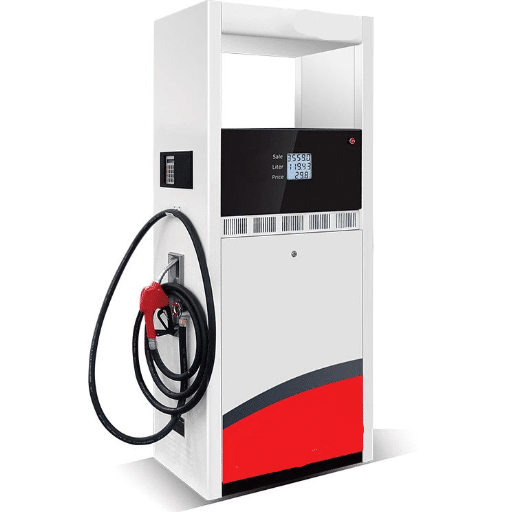
Waterproofing provides a significant measure for industries to reduce environmental impacts by adopting green practices. This is further enhanced by the installation of vapor recovery systems to control emissions, ensure energy efficiency, and promote the use of solar energy, among other initiatives. The other means include providing alternative fuels, such as biodiesel and ethanol, as well as electric vehicle charging, in support of the worldwide effort toward sustainable energy solutions. Waste is disposed of properly, and recycling programs are implemented to ensure that environmental standards are met and that the station’s carbon emissions are reduced. When these activities are implemented, fuel stations become actively involved in protecting the environment and promoting the sustainability of the Earth.
Electric Fuel Options and Their Impact
As with every great invention, the introduction of electric fuels has brought significant modernization to the sector, thereby reducing emissions and enhancing energy efficiency. Primarily, EVs run on electricity stored in batteries, which is then recharged at the charging infrastructure setup. Recent data indicate that the global EV market is expected to grow at a CAGR of 22.6% from 2023 to 2030; this growth reflects rising consumer demand and governmental policies designed to curb carbon emission levels.
Besides, increased investments in public charging infrastructure have increased the availability of charging points, with over 2.7 million public chargers installed globally by 2022. With fast technology, some electric vehicles can charge from 0 to 80% in just 30 minutes, making them increasingly viable for both daily use and long-distance applications. Another benefit of electric fuels is that they reduce dependency on fossil fuels, with electric vehicles drawing power from almost zero lifecycle emissions generated from renewable sources such as wind, solar, and hydroelectric power.
Switching to electric fuel has significant environmental implications. Life cycle analysis studies demonstrate that clean energy grid-powered electric vehicles generate 50%-70% fewer emissions than the polluting internal combustion engine vehicle counterparts. This is coupled with a steep downward trajectory in battery costs, with costs having declined by nearly 89% over the last decade, making electric mobility a compelling and sustainable option for consumers and industries worldwide.
Improving electric fuel options and related infrastructure will take societies a few steps farther in terms of achieving the global climate target while supporting energy independence and sustainable transport sectors. Businesses and governments must take action to ensure that these technologies are as widely available and affordable as possible for a cleaner future.
Managing Waste and Efficient Container Use
Proper waste treatment, combined with efficient container usage, is essential for minimizing the environmental impact of waste and promoting sustainability. Worldwide, improper disposal generates more than 2 billion tons of solid waste every year, with less than 20 percent of this waste being recycled or composted. The entire situation highlights the growing need for proper waste sorting, effective recycling systems, and consumer education to prevent waste from reaching landfills.
Global Waste Management Statistics
| Metric | Current Status | Target/Potential |
|---|---|---|
| Annual Solid Waste Generation | 2+ billion tons | Reduction through prevention |
| Recycled/Composted Waste | Less than 20% | 70% achievable in progressive cities |
| Single-use Plastics | Significant environmental impact | Reducible through refillable containers |
With industries increasingly exploring novel possibilities such as reusable packaging, biodegradable materials, and innovative container technologies, these smart containers feature sensors embedded to monitor waste levels in real-time, enabling responsive collection schedules and reducing inefficiencies. Additionally, the lost cause initiatives of circular economy promotion, where resources are put into cycles of use and regeneration, are gaining momentum. For instance, wherever companies have championed the use of refillable containers along with zero-waste policies, a significant reduction in single-use plastics has been observed.
On an individual level, engaging in the separation of recyclable materials, composting organic waste, and using reusable containers has the potential to reduce an individual’s waste footprint significantly. Governments and bodies worldwide are promoting policies and incentives to encourage these waste management practices, while some cities boast of achieving 70 percent recycling rates. In synergy with new-age technologies, policies, and mindsets, waste and container utilization management can become stepping stones for sustainability.
Regulations and Compliance for Small Gas Stations
Operating a small gas station falls under several environmental, health, and trade regulatory provisions aimed at environmental protection, public health safety, and fair trade. Chief among these would be federal and state regulations covering underground storage tanks (USTs), handling of hazardous substances, and fuel quality standards.
Underground Storage Tanks Regulations
Small gas stations must ensure strict adherence to UST statutes, operating under various authorities, including the EPA, to avoid soil and groundwater contamination through leakage. Compliance means having a system in place for checking leaks at both the installation and maintenance levels, as well as corrosion protection, or both, in addition to snap-in devices for spillage or overfilling. Currently, there are approximately 552,000 active USTs across America, and routine inspections ensure they remain safe.
Environmental Protection Laws
Gas stations must comply with stringent environmental laws and protocols, such as state and federal Clean Air Acts, which aim to limit vapor recovery emissions during refueling. For instance, Stage I and Stage II Vapor Recovery systems are generally required to limit the emission of volatile organic compounds (VOCs) so that VOCs in the air fulfill clean air standards.
Fire and Fuel Safety Standards
Fire safety is ensured by compliance with codes that require the installation of fire suppression systems, proper electrical installations, and correct storage distances for fuels. Most of these standards are issued by the National Fire Protection Association (NFPA) to mitigate hazards related to flammable and combustible liquids.
Regulatory Compliance Overview
| Regulation Type | Key Requirements | Compliance Authority | Penalty Range |
|---|---|---|---|
| UST Regulations | Leak detection, corrosion protection, and spill prevention | EPA, State Agencies | Up to $25,000/day |
| Environmental Protection | Vapor recovery systems, emission controls | EPA, State Environmental Agencies | Variable based on violation |
| Fire Safety Standards | Fire suppression, electrical safety, and storage distances | NFPA, Local Fire Departments | Fines, potential shutdown |
Penalties for Non-Compliance
Penalties include heavy fines, lawsuits, and shutdowns for any non-compliance. For example, if one fails to comply with UST regulations and standards, they are liable for penalties of up to $25,000 per day, depending on the severity of the violation.
A panoply of rules that need to be understood and followed by the operator of a small gas station to avoid legalities, take care of the environment, and ensure the safety of consumers and employees at work.
Future Trends in the Gas Station Industry

With the evolution of technology and changing consumer behavior, the gas station industry has undergone rapid changes. The first developing trend is the increasing installation of electric vehicle (EV) charging stations, primarily driven by the growing demand for sustainable energy solutions. Furthermore, gas stations are increasingly making their convenience stores more attractive by offering meals-to-go, grocery items, and additional services. The digital payments arena is also concerned with mobile apps and contactless purchases to ensure customer convenience. Finally, environmental laws are prompting fuel providers to explore clean energy options, such as biofuels and hydrogen, with the goal of reducing their carbon footprint.
Innovations in Fuel Technology
In addressing global energy needs and environmental concerns, ongoing improvements in fuel technology play a crucial role. One such innovation is the development of synthetic fuels, which are being developed as a cleaner alternative to traditional fossil fuels. Synthetic fuels or e-fuels use renewable electricity, carbon dioxide captured from the atmosphere, and hydrogen to make a product that emits far less greenhouse gases during combustion. Generally, it is estimated that synthetic fuels can reduce lifecycle CO2 emissions by nearly 85% compared with conventional ones.
| Fuel Technology | Key Benefits | Market Growth/Data | Environmental Impact |
|---|---|---|---|
| Synthetic Fuels (e-fuels) | 85% CO2 reduction, renewable source | Emerging technology | Significantly reduced greenhouse gases |
| Biofuels (Ethanol/Biodiesel) | Renewable, crop-based production | 110 billion liters produced (2022) | Lower carbon emissions, energy security |
| Green Hydrogen | Zero emissions, renewable production | 9%+ CAGR (2023-2030) | Zero-emission fuel option |
| Advanced Batteries | Higher density, faster charging | 89% cost decline over the decade | Enables cleaner transportation |
In recent years, the key focus has been on the progressive implementation of biofuels. They include biodiesel and ethanol, which are produced from organic materials such as crops, algae, and waste. Global ethanol production in 2022 was reported to be approximately 110 billion liters, marking a significant leap in scaling biofuel solutions. Using these biofuels in transportation helps reduce carbon emissions and improves energy security through fuel source diversification.
Hydrogen-fuel technology is also evolving at a rapid pace, with significant funds flowing into green hydrogen production and the development of hydrogen-fueled vehicles. Green hydrogen facilitates the production of zero-emission fuel through renewable energy and finds applications in heavy industries, transportation, and even residential heating. According to forecasts, hydrogen markets will grow at a CAGR of over 9% from 2023 to 2030, demonstrating that the hydrogen industry will be a big one.
Similarly, everything from battery technology to electric transport is chipping away at the traditional liquid fuels’ hegemony. The promising developments in battery storage, including those of solid-state battery types, offer the possibility of higher energy density, faster charging, and longer life, pushing the frontiers of electric vehicles (EVs).
These advances highlight the dynamic nature of fuel technology and its ability to facilitate a transition toward sustainable and clean energy options, enabling industries and consumers alike to reduce their environmental impact.
The Rise of Mobile Charging Stations
I suppose mobile charging stations are indeed a powerful tool to cast off the shackles on the parties responsible for the mass adoption of electric vehicles. These charging stations bring flexibility and convenience: Should an EV user wish to charge their vehicle at any time or anywhere, the options will not be limited to fixed locations. As a remedy to range anxiety that might confront an EV owner with being stranded in remote areas during emergencies, mobile charging stations democratize and enhance the user-friendliness of EV ownership.
Adapting to Changes in Consumer Preferences
The dynamic society has given rise to ever-changing consumer trends and shifting behavior patterns. Convenience, sustainability, and personalization are the utmost concerns of today’s consumers when choosing the products and services to use. Therefore, companies must apply best practices in data analytics and gather consumer feedback to better understand these preferences, ultimately tailoring their products and services to meet the emerging demands. The increase in demand for green options has become a driving force for most industries to devise green alternatives and reduce their carbon footprints. Moreover, meeting consumer expectations for a great user experience through technology, such as AI-based recommendation engines and mobile-first application platforms, is gaining significant relevance for businesses in the face of digital consumers. The industry, however, would lose relevance and be less loyalty-inducing if it were to be suffocated by a lime instead of proactively embracing change and agility.
Key Takeaways for Small Gas Station Success
- Strategic Location: Choose high-traffic areas with limited competition
- Diversified Revenue: Focus on high-margin convenience items alongside fuel sales
- Technology Integration: Implement modern POS systems, mobile payments, and IoT monitoring
- Environmental Compliance: Stay updated with regulations and consider green alternatives
- Customer Experience: Prioritize convenience, speed, and excellent service
- Future-Proofing: Prepare for EV charging and alternative fuel options
Conclusion
The small gas station industry represents a vital component of the global fuel distribution network, serving communities with essential services while adapting to evolving market demands. From understanding the basic components and equipment requirements to implementing effective sales strategies and ensuring regulatory compliance, successful operation requires attention to multiple facets of the business.
As the industry continues to evolve with technological advancements, environmental considerations, and changing consumer preferences, small gas stations must remain agile and forward-thinking. The integration of mobile technology, focus on quality control, and preparation for alternative fuel options will determine long-term success in this competitive market.
Whether you’re considering entering the fuel station business or looking to optimize existing operations, the strategies and insights outlined in this comprehensive guide provide a solid foundation for building a profitable and sustainable small gas station that serves both community needs and business objectives.
Reference Sources
“Biochemical and Haematological Parameters Among Gas Station Employees”
Frequently Asked Questions (FAQs)
What is a small gas station, and how does it work?
Small gas stations are compact fuel stations that typically provide gasoline and other fuels required by vehicles. There are usually a few services considered essential, such as refueling, a convenience store, and maybe electric charging stations for electric cars. These small service stations are designed with space efficiency in mind, giving service to the trade areas of both locals and travelers.”
What services would I expect at a mini gas station?
A mini gas station should offer basic fuel services, including supplying petrol and diesel pumps. Many mini stores also stock convenience store items, such as snacks and beverages, and occasionally offer car care products. The overt attention ensures quick and easy service for the customer who is about to dash away.
How can I find the best small gas station near me?
Use mobile apps or online maps with a listing of nearby small gas stations to find the best one. Look for customer comments, price variation, and services offered to assess which station serves your needs. Consider convenience, cleanliness, and the availability of amenities.
What are the types of equipment generally found in a fuel station?
A fuel station is typically equipped with pumps for dispensing gasoline and diesel, tanks for storing the fuel, and sometimes electric charging stations for electric vehicles. Other equipment in use includes signage, payment terminals, and convenience store displays for the products sold on site.
Is it possible for a small gas station to also offer electric-vehicle charging services?
Yes, many small gas stations are installing charging stations for electric vehicles as the number of electric car owners continues to increase. This creates a conducive environment where customers can refuel their vehicles as they prefer, either with gasoline or an electricity-powered recharge.
What are the benefits associated with the use of portable fuel containers?
Portable fuel containers serve the purpose of safely transporting petrol or diesel for use in refueling lawn equipment, generators, or other similar applications. More importantly, these containers are well-designed to be leak-proof and easy to carry, thus providing very convenient fuel storage.
How to Check for Fuel Quality at Small Gas Stations?
Ensure the quality of fuel at a small gas station by visiting one that is the best-reputed and well-maintained. One can ascertain this by checking for certifications or quality assurance signs. Alternatively, customer reviews can offer insight into both the quality of the fuel and the overall service experience.
What is the environmental impact of small gas stations in America?
The environmental impact of small gas stations differs depending on their operational behavior. Many of them have adopted green technologies, including solar panels to generate energy and waste management systems. They thus reduce emissions and enhance sustainable development, thereby lessening their own environmental impact while also servicing the community.

